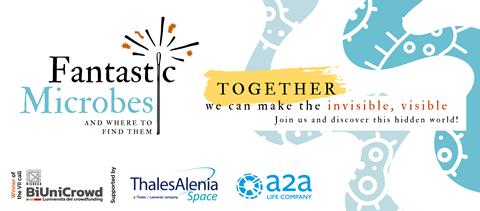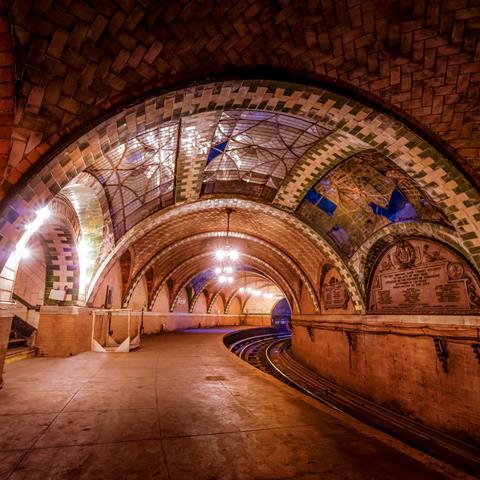”We are symbionts on a symbiotic planet, and if we care to, we can find symbiosis everywhere.” - Lynn Margulis, The Symbiotic Planet: A New Look At Evolution, 2013
In the grand story of life, humans are never alone. We share our bodies, our homes, and our cities with a vast, invisible world of microorganisms, ancient evolutionary allies. Despite their essential roles in shaping ecosystems, health, and history, microbes are often overlooked, their ubiquity taken for granted, and their stories left untold.
That’s what we set out to change with Fantastic Microbes and Where to Find Them, a citizen science initiative that brought microbial life into the spotlight and urban exploration into the realm of scientific discovery. Over the course of a year, in two public squares and a plant nursery in Milan, Italy, 80 university students turned their neighborhood into a living laboratory. Under a carefully designed sampling protocol, they collected a staggering 2,429 samples of the urban microbiome in just four two-hour sessions, each capturing a different season.
This wasn’t just data collection: it was transformation. The Bicocca Sampling Days (BSDs) empowered students from the University of Milano-Bicocca to step into the shoes of researchers, deepening their understanding of microbiome science and gaining hands-on experience in fieldwork. Compared to non-participants, their perceived scientific skills for learning and doing microbiome research-related tasks and knowledge improved significantly.

And this is just the beginning. With the first phase complete, we’re now preparing for the next: analyzing the microbial DNA of a subset of the collected samples and giving students access to what’s often missing from their education: cutting-edge training in microbiome data analysis.
Through this project, we aim to show that citizen science is not only educational: it’s powerful. It can match, and even complement, traditional research in terms of rigor and reach, all while making science accessible, collaborative, and public.
So the question becomes, what microbes are living among us, shaping our cities, our health, and our shared futures?…Let’s go find them.
Meet the Team
Our team was brought together by a shared belief: science should be participatory, inclusive, and accessible. We are an interdisciplinary group of researchers, educators, and science communicators from the University of Milano-Bicocca and beyond. The project is led by the Biome Research Team at the University of Milano-Bicocca.

We work in close collaboration with Simbio Onlus, an Italian non-profit with biodiversity at its heart, dedicated to science communication and environmental education, and KBase, a U.S. Department of Energy bioinformatics platform supporting open-access data and training in systems biology.
At the heart of the project are:
- Microbiome scientists and ecologists, researching how microbial communities shape our environments and lives.
- University educators, dedicated to transforming science education by putting students at the center of real-world research.
- Science communicators, turning complex microbial concepts into engaging public narratives
Together, we’ve built a project where students are not passive learners, but active researchers collecting data, generating questions, and analyzing results.
How You Can Get Involved
We’re excited to share our model with the broader microbiology community (it will be published soon and presented in an interactive session at FEMS Micro 2025, in Milan). And we’d love your support!
Fantastic Microbes and Where to Find Them is a crowdfunding-based initiative, and everyone’s contribution can make a real difference.
By purchasing one of our microbiome-inspired rewards, you’ll help fund:
- Sequencing the microbial DNA of at least 200 samples collected during the Bicocca Sampling Days.
- Organizing a hands-on workshop for 20 university students, teaching them how to analyze microbiome data and write scientific reports.
- Bringing science beyond the lab and sharing it with everyone! Promoting a new, accurate perspective that debunks myths about microbes and connects the public with research.
Our project has already been chosen by Thales Alenia Space and A2A. Their support brings added strength to our mission: if we reach our crowdfunding goal of €5,000, they will double it with an additional €5,000 contribution. Their involvement shows how science, industry, and civic engagement can come together to create impact and open up new possibilities for citizen science.
Support the project and claim your reward here.
We believe that empowering students and citizens to investigate the microbial world around them helps build a deeper understanding of nature and of ourselves.
Together, we’re building bridges between science and society, DNA and daily life. If you are interested in connecting with the author of this work, please contact Giulia Ghisleni.

Additional information
This work was conducted within the MUSA – Multilayered Urban Sustainability Action – project, funded by the European Union – NextGenerationEU, under the National Recovery and Resilience Plan (NRRP) Mission 4 Component 2 Investment Line 1.5: Strengthening of research structures and creation of R&D “innovation ecosystems”, set up of “territorial leaders in R&D”. This work is supported by the Society for Experimental Biology (SEB) Educational Research and Development Grant.








No comments yet